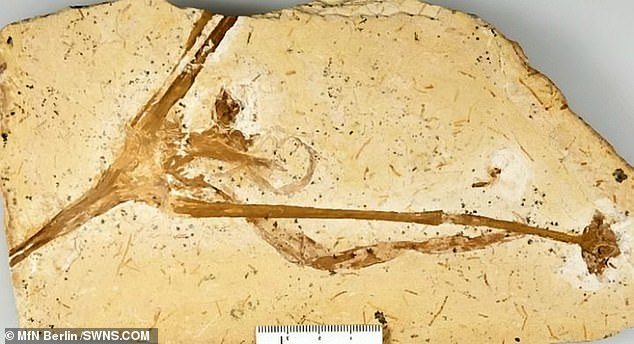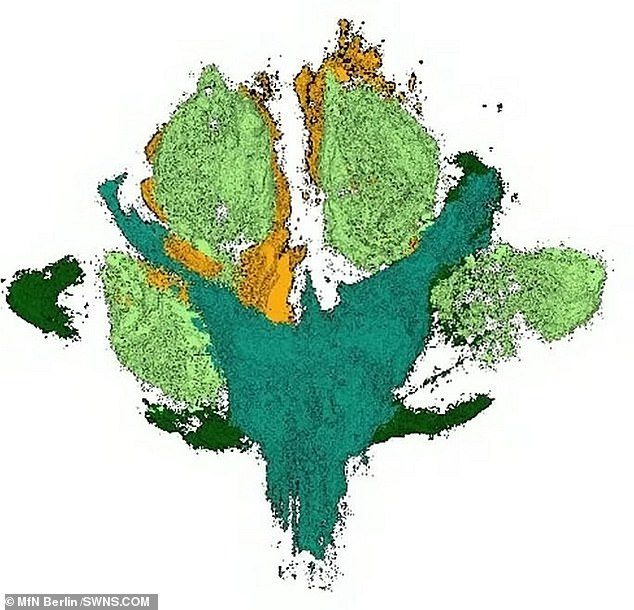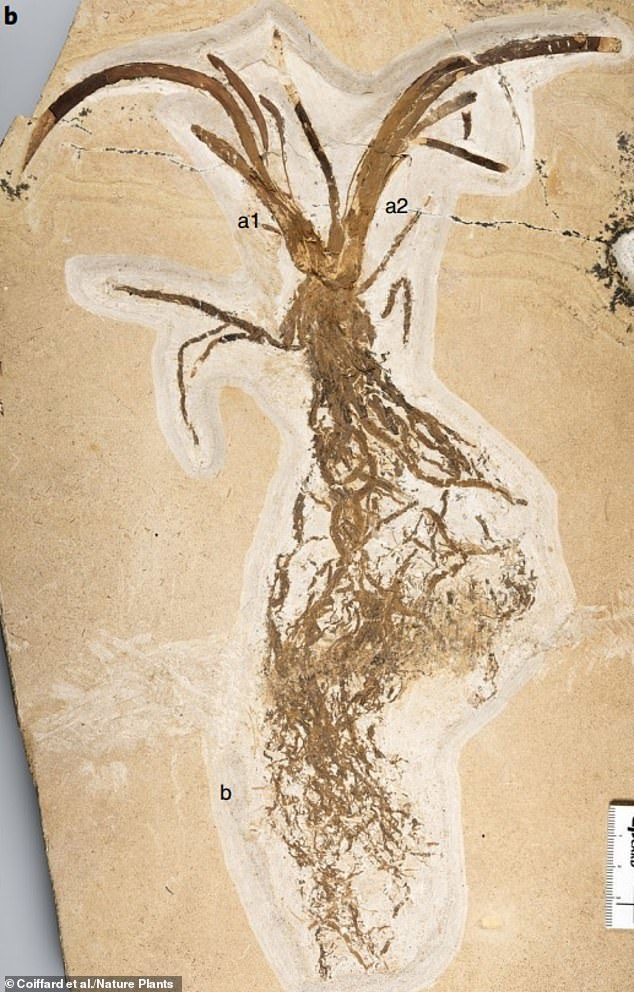
The fossil is exceptionally well-preserved — and includes the plant's roots, a flower and even individual cells.
It is thought to have originally have grown along the banks of a freshwater lake in what is today the city of Crato in northeastern Brazil.

Today, there are more than 350,000 different species of angiosperm, and this fossil — which has been named Cratolirion bognerianum — is among the first to ever evolve.
They also survived the mass extinction event 66 million years ago which wiped out vast amounts of life on Earth, including the dinosaurs.
It was discovered by botanist Clement Coiffard in the collections of the Museum für Naturkunde, in Berlin, with whom he is affiliated.
'The fossil material described here is from the Crato plattenkalk limestone, said Dr Coiffard.
He added that it came 'from open-air pit quarries in the area of Santana do Cariri in the state of Ceará, northeast Brazil, where the stone is mined for construction purposes.'

'It is probable that flowering plants originated in the tropics, but only very few fossils have been described to date,' said Dr Coiffard.
'From this newly described plant, Cratolirion bognerianum, and other species of Crato flora, it can be deduced that the tropical flowering plants were already very diverse.'
'This study thus provides new insights into the role of the tropics in the development of early flowering plants and their rise to global supremacy.'
Among Dr Coiffard's team was physicist Nikolay Kardjilov, who is an expert in using X-rays and neutrons to perform three-dimensional analyses.
The researchers used CT scans to study the flat fossil without damaging it — peering inside the stone to examine the leaves, petals and reproductive pistils.
With a length of almost 16 inches (40 centimetres), the specimen is not only large, but also shows many typical characteristics of this type of plant.
These include its parallel veins, narrow leaves with a sheath, a fibrous root system and triple flowers.

This could be due to the fact that Lake Crato was in the lower latitudes, while all other fossils of early flowering plants came from the middle latitudes.
'With an age of about 115 million years, Cratolirion is one of the oldest known,' said Dr Coiffard.
'The good preservation of the fossils allowed the evaluation of reproductive, vegetative and anatomical characteristics of monocots, leading to a robust identification of this fossil as a crown monocot.'
There are other possible explanations for why monocotyledonous plants have such a poor fossil record, Dr Coiffard explained.
'Because they are fundamentally herbaceous, their leaves are not generally shed in large numbers and instead remain attached to the parent plant, thus reducing the probability of fossilisation,' he said.
Other plants such as water lilies, aron rods, drought-resistant magnolias and relatives of pepper and laurel have also been found at the site.



Comment: See also:
- New paper confirms trilobite explosion during Cambrian - appeared out of nowhere with no visible ancestors
- Why Darwinism Is Wrong, Dead Wrong - Part 1: Intelligent Design and Information
- Darwinism, Creationism... How About Neither?
And check out SOTT radio's: